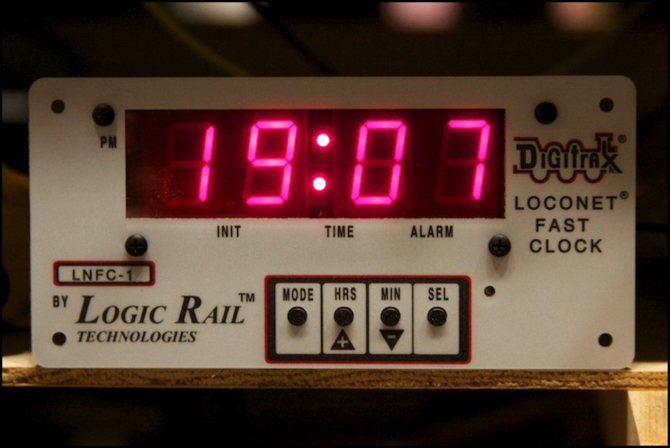A Matter of Time

Railroads have always been concerned with time. Early ones used timetables alone to keep trains on the same track from colliding. This didn’t work very well, particularly given the accuracy of mid-1800‘s pocket watches and the lack of synchronized time sources, and many lives were lost. Signaling systems and other protection methods were gradually developed. But timetables continued to be important for all trains in scheduling the use of tracks even with other systems used for protection, and timetables were required for passenger trains, as trains from different places needed to coordinate their arrival and departure at interconnection points, so passengers could move smoothly from one to the next as part of a longer journey. Railroads gradually developed standards for time-keeping (and they’re responsible for the adoption of the standard time zones used in the U.S.), and also influenced the development of clocks and watches to provide accurate and synchronized time sources.
Japanese passenger trains today are famed for their obsessive adherence to schedules, with deviations measured in seconds, not minutes. So it only seems reasonable that a model railroad of a Japanese passenger line should operate to timetable (well, eventually,I need a yard/staging tracks before that will be much fun).
When I bought my DCS100 DCC Command Station last winter, one of its features was a “Fast Clock”, which is a clock that can be set to run at different rates. Typical rates would be in the 4:1 (four fast minutes pass for every real minute) to about 8:1 range. And the DT402D throttles I have will display the DCS fast clock, synchronized via the LocoNet used as a throttle bus. You can also buy a Fast Clock display that plugs into the LocoNet (photo above) and displays the DCS clock. And my JMRI computer software can also display, set or even control the DCS clock. Or so went the theory, unfortunately when put to the test things didn’t work that way.
In fact, things really didn’t work as expected, and after a good bit of testing (chronicled on my Fast Clock page), I discovered that there was a known bug in the DT402 throttles that prevented them from syncing to the network clock. They can set it, and run individually (not quite accurately; an 8:1 speed works out to roughly 8.1:1, and the two of them running independently will diverge by a fast minute or two per hour). You could use them like prototypical railroad pocket watches, and just synchronize them to a master clock every shift, but my dream of a synchronized time system isn’t going to include them until the bug gets fixed (whenever that is, Digitrax didn’t say anything helpful about plans to fix it, although they did acknowledge the bug).
Additionally, the DCS has a really inaccurate fast clock, with 8:1 meaning something more like 10:1, although it seems to vary a bit. That’s another known problem, according to reports I’ve read online, and JMRI even includes an option to “correct” the DCS clock, although I couldn’t get it to work right (I didn’t try too hard, though). I’m getting the idea that some marketing manager at Digitrax said “lets put in a fast clock”, and everyone nodded, handed the job off to an intern, and promptly went back to working on “real” DCC. This really feels like an afterthought they tacked on an otherwise well-designed system, and then forgot about.
So the heck with it. If they fix the throttles someday, then I’ll use them as extra displays. In the meantime, I can use either the LNFC-1 or the computer as a master clock, and just ignore the DCS’s built-in clock and the DT402’s displays. That’s the plan at the moment anyway. I need to buy a second LNFC-1 so I can see the time on the other side of the layout, and without staging tracks I’m in no hurry to start operating to timetable. But I’ll get there.
The LNFC-1, by the way, seems like a very nice clock. They actually make two LocoNet models (mine, with 0.8” digits, or about 20mm high designed for mounting to the layout fascia and the “large” one with 2.3” digits (about 58mm high) designed for mounting in some kind of frame. Both are digital displays, which fit my “contemporary” era. They also make a similar clock for NCE systems.
The LNFC-1 can act as a master or be slaved to some other clock (like I plan to do with my computer), can run at the usual N:1 rates supported by Digitrax, and can display time in either 12-hour AM/PM or 24-hour forms.
Other website changes:
- Added several trains to the Roster pages, including a 485 Nikko/Kinugawa, an Apple-green Setagaya tram, and a chocolate-colored (literally; it’s an ad for a chocolate company) Enoden tram.
- Added photos to the Roster Photos and Train Photos albums.
- Updated the Reservations, Limited EMU, Subway Train and Freight Car pages.
- Did some more work on my still-incomplete list of Japanese Freight Car abbreviations.




